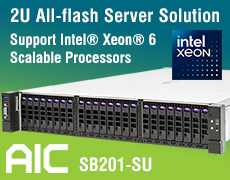History (1993): Exclusive Interview With Fred Wenninger, President an CEO, Iomega
Why haven't removable disk drives ever been big market in comparison with fixed HDDs?
By Jean Jacques Maleval | August 17, 2020 at 2:03 pm Fred William Wenninger was born February 6, 1939 in Alva, OK. After serving as HP for a few computer divisions over an 8-year period, he left HP in 1986 to become president of Allied Signal Corp’s Bendix/King subsidiary. He left Bendix/King in 1989 to become the president and CEO of Iomega Corp. (Roy, UT), in removable and external mass-storage products for IBM PCs. He left Iomega in 1995 to become the president, CEO, and a director of keyboard manufacturer Key Tronic Corp. He was a farmer and rancher. He grew wheat in Colorado and had a game-hunting preserve called the Wing and Rack in Oklahoma.
Fred William Wenninger was born February 6, 1939 in Alva, OK. After serving as HP for a few computer divisions over an 8-year period, he left HP in 1986 to become president of Allied Signal Corp’s Bendix/King subsidiary. He left Bendix/King in 1989 to become the president and CEO of Iomega Corp. (Roy, UT), in removable and external mass-storage products for IBM PCs. He left Iomega in 1995 to become the president, CEO, and a director of keyboard manufacturer Key Tronic Corp. He was a farmer and rancher. He grew wheat in Colorado and had a game-hunting preserve called the Wing and Rack in Oklahoma.
Computer Data Storage Newsletter: Leaving out FDDs, why haven’t removable disk drives ever been- a big market, in comparison with fixed disk drives?
Wenninger: Originally, all the drives were removable. I think that the economics of making fixed drives at very low cost and very high volume has made the difference in price to be so significant, because price reasons become the standard situation. But now the removable mass storage market is one of the fastest growing segments, in the mass storage industry, and in the computer industry.
Why haven’t you ever considered the possibility of having an external second-source manufacturing for your cartridges and your Bernoulli boxes?
One time, the company did look into that, in terms of a licensing, but we really haven’t had any need for that. I think that early on, the company was OEM focused and that was its primary objective. Then, for a variety of reasons, it became apparent that the larger market was in the subsystem market and this came after IBM began to bundle the disks inside the machines. So the company went away from its OEM strategy to the end-user strategy. For some of the newer products, like the Floptical and the tape drives, it’s a different story because they primarily are OEM products. SyQuest didn’t have a big success with its first 88mB drive, because it couldn’t read and write 44MB drives. And it seems that you are doing the same mistake with the MultiDisk 150 which can only read, and not write 44MB cartridges.
Is it for technological or marketing reason?
Well, it’s for technological reasons. The 150 does read and write the 90, it goes back one generation. Then it reads the 44, so it goes back 3 generations that way. But in the future, we do have new head technology that will allow our future generations to be compatible back to the 90, the 150, so when the next higher capacity comes, it will also read and write the other capacities. I guess it’s not technologically impossible but with the funds it would take, the amount of dollars, it would be too high. What reasons are there today to buy a Multidik 150.
In comparison with a 3.5-inch MO drive, for about the same price, MOs are smaller, the MO cartridge is less expensive per megabyte and there are multi-sources for MO media.
Actual capacity is quite a bit greater, the 150MB has a higher capacity, the performances are significantly higher, the 150 performs just like a hard disk. If you’re loading a large file into, or out of, it’s actually faster than most hard disks, and the cost of the drive is less, the drive is significantly less than most of the 3.5-inch M-Os. So it’s true that the media itself is less expensive, that’s why we offer a range of various sizes.
You are going into optical disks, tapes and Floptical. Does it mean that you are uncertain on the future of Bernoulli drives?
Not at all, it’s like McDonald’s, if McDonald’s adds McChicken to the menu, does it mean it won’t sell hamburgers any more? What we are becoming is the premier mass storage company. Our Bernoulli sales continue to rise, and we don’t see any competition, we see it as being complementary.
First you sold MO drives from Ricoh, now from Maxoptix. Why did you change?
They have much higher capacity, it’s sort of the top end of the MO drives. They just are better drives.
Is it technologically possible to conceive a 3.5-inch Bernoulli drive?
Yes. We will have one at some point and time. Our competition likes to say that the Bernoulli is limited only to the 5.25-inch size. We have, in our laboratory, varying form sizes. We have chosen, at this time, to stick with the larger form factor to give higher capacities. When people buy removable storage as an external box, the size is not so important. What they want, is the highest capacity and the highest performance for the lowest cost. That’s why we’ve focused more on the 5.25-inch, so we could have the 150MB capacity. But the direct answer is yes, we will have smaller form factors.
What will the capacity be?
Well, you can just scale roughly, with the size of the disk and do the arithmetic. But the thing is that, each and every year, our technology is increasing: two years ago it was a 44, a year ago it was a 90, and now it’s the 150. You have to extrapolate the increasing capacity.
So, what’s the limit of the Bernoulli 5.25-inch, in terms of capacity and density?
There really isn’t a practical limit. Our strategy has been to match the capacity of our drive to the bulk of the Winchester drives. When the Winchesters were 44MB, or 30, or 25, then we’d have a removable drive with a little higher capacity. Right now, I think the average size of a Winchester is probably 80 to 100MB. Our attempt is to stay basically in, or ahead, of that capacity. It’s not a matter of technology it’s a matter of business in this case.
Will you offer something in the future for the explosive notebook computer market?
I think that one of the best products for the notebook market is the Floptical drive. Because every notebook requires a 3.5-inch floppy of some sort, at some place, it’s either built-in or in a separate box, but you just have to have this to load the software. With the Floptical then, you have in the same drive the compatibility with the standard floppies. You can read and write your software, then you go to 21MB and it’s also 3x the performance, even on a regular floppy. I think that laptops are going to have a hard drive built in. I can’t conceive a laptop with just one removable drive, because when you remove it you take out the operating system and all the applications and everything, and when you put in the next one you have to reload all of this, it’s not practical, it doesn’t make any sense. But the problem is that there are no slots left.
Why didn’t SyQuest succeed in the DOS market, why didn’t you succeed in the Macintosh market?
Iomega went through some turbulent times. This was back in 1987, when the company had some financial problems, and at that time, the company decided to pull back out of various markets. At that time, SyQuest came in and I think they made great strides. Recently, since we have been reentering the Mac market, our Mac sales are just going up very fast.
What’s respectively your gross margins on Bernoulli boxes and Bernoulli cartridges?
We don’t brake out the figures separately for the drives and for the cartridges. But in our annual report, last year, you can see that the gross margin of the company overall is running in the high 40% range.
Do you loose money on the boxes?
No. I think that a certain competitor does do that. We make money on the drives and a lot of money on the cartridges.
Which special technology did you get from Springer? On which product will it be used?
We want heads that have multiple gaps to have the compatibility between disks of different capacities. When you walk through Springer’s plant, it looks a lot like an integrated circuit place: the heads and the gaps are made just on a wafer. On each head, I can have lots and lots of gaps, and around them are the little coils that make the head. Having multiple gaps is incredibly difficult. Springer’s planear head will allow us to have many generations of compatibility. Another thing, it will allow us to do would be to have a write head followed immediately by a read head, so we would have a verify right on line. You could imagine having parallel heads, you could then have a very high performance drive.
This technology will work on Floptical. Can you use this head for Winchesters?
Yes, but a wafer line costs a lot. This was part of our acquisition, one of the advantages is that the geometries involved are less than ICs, we were able to use one generation old IC equipment.
There is a French firm, Silmag, that is also working on planear heads.
Yes, I know. Springer has some very strict patents on all of this. This is part of what we’ve purchased.
You announced an agreement with the Japanese Aiwa on DAT. What will happen, for which product and when?
I would hope that some time during this year, we would be introducing the first DAT product. We have a long term relationship with Aiwa in mind and so part of our goal is to have multiple tape products as well, some of these we will do ourself, and some of these we will do in partnership.
During your last quarter, ended December 92, in comparison with 4Q91, your sales went down and your profit went down from $4.3 million to something not far from zero and you will laid off 100 people. What happened?
Several things, first of all, we had 2 markets that actually were less than they were a year ago. The first one was our federal market in USA, it was down near almost 30%, it is our second largest market. But the government delayed many of its major programs. The second one is that, in Europe, our German business also declined from what it was in 1991, and Germany is our largest European market. That was a problem that was our fault through our distribution in Germany. So if you take those two out, Europe grew close to 30% for us, and domestic was up, I think 11 to 12% overall.
Iomega is probably the only storage manufacturer In the Mormon state of Utah. Why are you there and does it change anything for your company?
I came to the company long after it was in Utah. The company was a breakout from IBM and I think they originally were in Arizona, and then they moved to Utah after a year. I think the primary reasons were the lower cost labor market and the lower cost of living, There’s a myth about Utah. Mormons are just like everybody else. I think that maybe 50% in our plant are Mormons but I can’t tell you which ones.
This article is an abstract of news published on the former paper version of Computer Data Storage Newsletter on issue ≠62, published on March 1993.
Note: Wenninger died on December 22, 2005 at the age of 66. He married Kay Magnuson in 1960, and together they had 2 sons. In 1985, he married Betty Dawson.














 Subscribe to our free daily newsletter
Subscribe to our free daily newsletter

